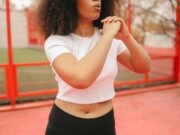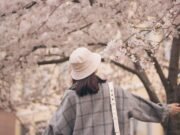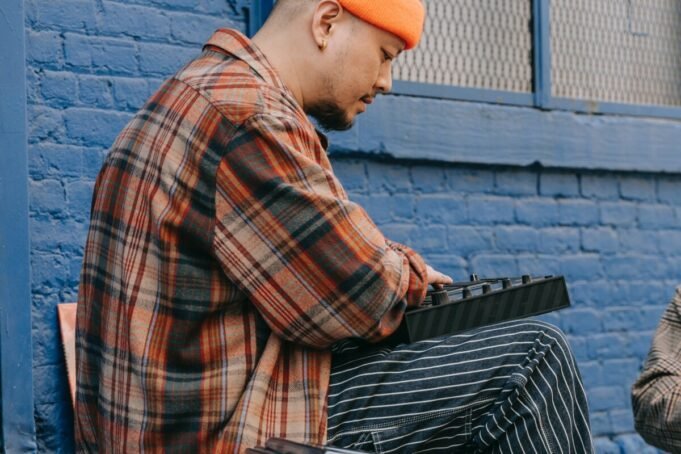Urban fashion is a dynamic tapestry of style, intrinsically linked to the pulsing rhythm of music. From the rebellious rock and roll era to the rise of hip-hop, music has long been the heartbeat driving the evolution of urban fashion trends. By exploring the relationship between music and fashion, we can trace the progression of urban style as a form of creative expression and cultural identity.
Music and fashion have always enjoyed a symbiotic relationship, playing off one another in an ongoing cultural conversation. When a new music genre emerges, a corresponding fashion aesthetic is quick to follow. Urban fashion in particular has been shaped by the diverse musical influences of the city, from jazz and blues to punk, hip-hop, and electronic dance. By examining this musical timeline, we can gain insight into the rich heritage of urban style.
At its core, urban fashion is about expressing oneself creatively through an assemblage of diverse influences. Music provides the soundtrack to this sartorial story, helping to disseminate trends and subcultures organically from the streets up. From the syncopated rhythms of ragtime to the raw energy of punk, music transforms urban fashion by injecting it with new inspiration. The result is an ever-evolving fashion landscape that pushes boundaries and challenges convention.
Urban Fashion Trends: A Symphony of Style
Urban fashion is difficult to define, as it encompasses an array of diverse and dynamic style trends. At its essence, it refers to the clothing and styles associated with inner-city youth culture. Urban fashion is multi-faceted, often incorporating influences from streetwear, hip-hop, punk, Japanese street fashion, and other genres. It is largely defined by its adaptability and ingenuity, with trends evolving quickly on the streets and in nightclubs.
Key elements of urban fashion include oversized t-shirts, jogger pants, bomber jackets, baseball caps, sneakers, and flashy jewelry. Branding and logos are often prominently displayed in urban streetwear as markers of authenticity. Distressed denim, leather, and edgy graphic prints are also urban style staples. A provocative, tongue-in-cheek aesthetic combines with an athletic look, resulting in a symphony of self-expression.
Beyond clothing, urban fashion encompasses a larger cultural identity rooted in music, art, and a sense of defiance. It is both a product of the inner city and a force shaping popular culture worldwide. From runway reproductions to mass-market brands, urban fashion continues to resonate. Its evolution is a story best told through the diverse musical influences that molded its trends.
Music and Fashion: A Duet of Expression
Music and fashion are kindred spirits, playing off one another in their cultural interpretations. They both act as platforms for communicating identity and status while allowing for individual self-expression. Throughout history, popular music genres have sparked complementary fashion trends, creating distinctive aesthetics linked to musical subcultures.
In the 1950s, the provocative gyrations of Elvis Presley and other rock and roll pioneers led to boundary-pushing fashion trends. Leather jackets, bold prints, and blue jeans would come to define the rock and roll lifestyle. Psychedelic music culture in the 1960s brought brightly colored, free-flowing hippie fashions. Disco of the 1970s inspired shimmery fabrics, sequins, and flashy suits perfect for the dance floor. These eras demonstrate how music shapes the very fabric of fashion.
Beyond mainstream trends, various music subcultures have bred their own unique fashion identities. Punk rockers subverted societal expectations with ripped jeans, leather, anarchic t-shirts, and outlandish hairstyles. Goth fashion was characterized by all black, macabre accessories, and dramatic make-up to match the aesthetics of gothic rock music. The rise of electronic dance music led to neon-colored rave fashion and phat pants. Across genres, fashion and music work in harmony to forge cultural identities.
Influence of Music on Fashion: A Rhythmic Revolution
While music and fashion work symbiotically, music has proven to be a driving force in inspiring new urban fashion movements. As artists inject the zeitgeist with fresh ideas and vibes, their musical revolution is reflected through fashion. Urban style has been particularly shaped by the rhythmic pulse of popular music, which awakens a spirit of originality.
Several seminal musical moments helped spur new directions in urban fashion. When hip-hop and rap music emerged from inner cities in the 1970s, it ignited a streetwear revolution. Brands like Adidas and Nike became synonymous with oversized sportswear, sneakers, and gold chains. Hip-hop culture transformed urban fashion by melding athletic wear with provocative edge.
The 1980s brought a vibrant explosion of color through pop, funk, and early hip-hop. Urban fashion absorbed this vibrancy, from day-glo fashions to aerobic leotards and graffiti-inspired designs. House music fueled rave culture in the 1990s, popularizing baggy pants, cartoonish prints, and clubwear. From Run D.M.C. to Missy Elliot, music videos also spread urban style far and wide.
Today, urban fashion continues to evolve in tandem with emerging musical styles like trap and grime. Through this musical alchemy, urban fashion revolutions are ignited from the ground up.
Fashion Subcultures and Music: A Harmony of Identity
While mainstream fashion pulls inspiration from urban style, several subcultures have also risen from the streets. These subcultures each adopt their own distinct fashions that harmonize with affiliated music genres. From punk to goth, fashion and music intermingle to signal collective identity.
Punk fashion grew from the rebellious sounds of the Ramones, Sex Pistols, and The Clash in the 1970s. Leather jackets, provocative t-shirts, studded accessories, and eccentric hairstyles became the uniforms of punk culture. Gothic fashion was popularized in the 1980s by post-punk bands like Siouxsie and the Banshees and The Cure. Its Victorian-inspired aesthetic of dark, ornate clothing matched the haunting sounds of gothic rock.
In the 1990s, hip-hop fashion became further codified through urban labels like FUBU, Rocawear, and Sean John. Oversized hoodies, bold streetwear, and flashy sneakers reflected the bravado of gangsta rap. Beyond clothing, the overall style of rappers – from Run DMC’s tracksuits to Lil Kim’s haute couture – permeated mainstream fashion.
Across eras and genres, fashion and music subcultures are united through shared style codes and sensibilities. By harmonizing image with sound, they carve out unique cultural niches tied to creative expression.
Evolution of Urban Fashion Through Music: A Melodic Tapestry
From jazz-age zoot suits to disco fever, the evolution of urban fashion has unfolded alongside musical revolutions. Music provides the backbeat that drives the dynamism of urban style. By tracing this musical timeline, we can gain perspective on urban fashion’s chameleonic nature.
In the early 20th century, jazz and swing music gained popularity in inner cities, inspiring new fashion aesthetics. Zoot suits, defined by their exaggerated shoulders and billowing pants, became associated with jazz musicians looking to rebel through fashion. The youthful energy of rock and roll music in the 1950s popularized leather jackets and jeans as symbols of teenage rebellion.
The 1960s witnessed an explosion of groundbreaking music directions, from Motown and the British Invasion to psychedelic rock. Urban mod fashion channeled this creativity through bold miniskirts, vibrant patterns, and space-age shifts. As hip-hop emerged in the 1970s, urban fashion gravitated towards athletic streetwear, oversized silhouettes, and ostentatious gold jewelry.
The 1980s brought pop, funk, and early hip-hop, inspiring eclectic urban trends like neon spandex, leather pants on men, and door-knocker earrings. Urban fashion in the 1990s was defined by minimalist grunge as well as the rise of hip-hop labels. Recent decades have seen urban fashion shaped by indie music, contemporary R&B, and digital culture.
Through this musical journey, urban fashion continuously reinvents itself as a tactile expression of cultural zeitgeists. Music provides the creative spark that ignites revolutions in style.
Conclusion: The Enduring Rhythm of Urban Fashion
Urban fashion has never stood still, evolving through decades of musical influences. From jazz to hip-hop and beyond, music has paved the way for new sartorial trends that channel the rhythmic pulse of the streets. Fashion and music will continue to be intertwined as urban style responds to fresh inspirations.
Today, urban fashion is a global phenomenon that never loses sight of its musical roots. New artists arise to shape the landscape, sparking trends that reverberate through streetwear and high fashion. This musical timeline reminds us that urban fashion has always been rhythmically dynamic in its mission of expression. By listening closely, we can hear the enduring heartbeat that connects all its varied threads.




































